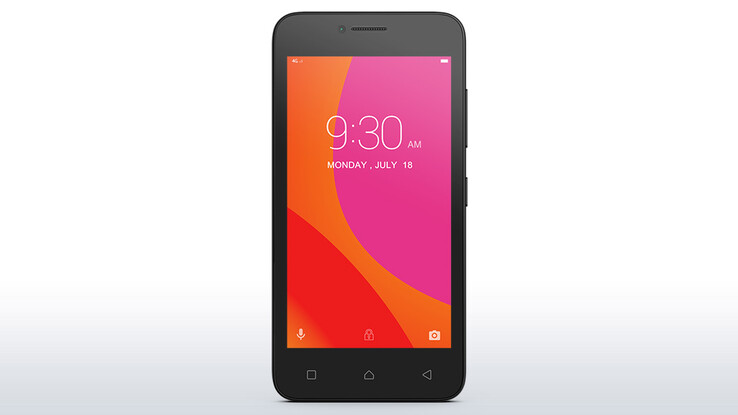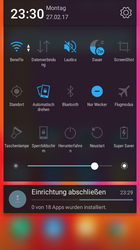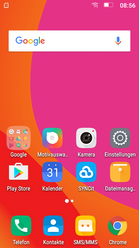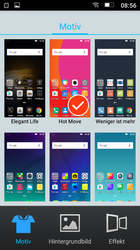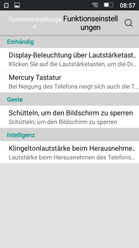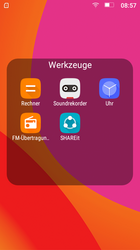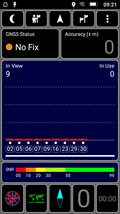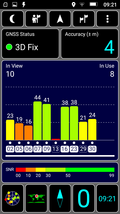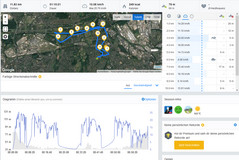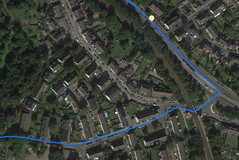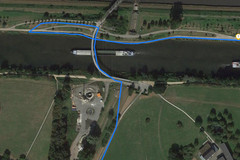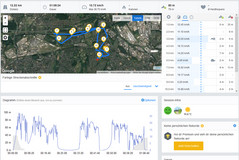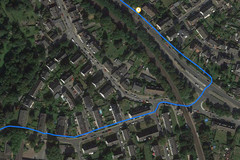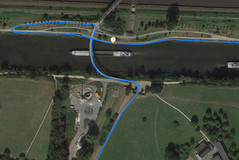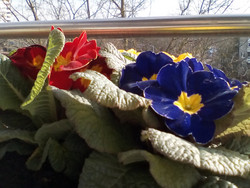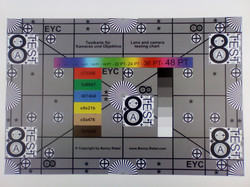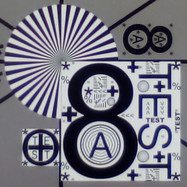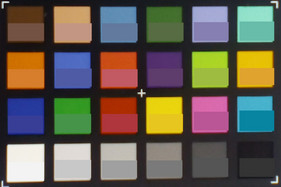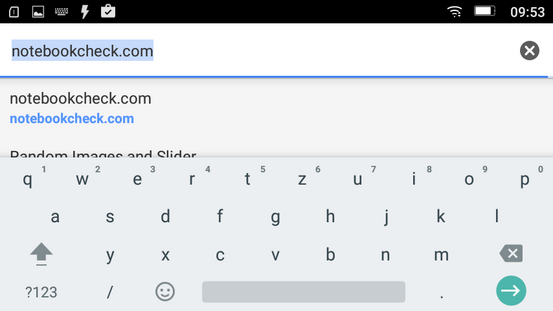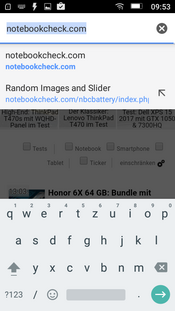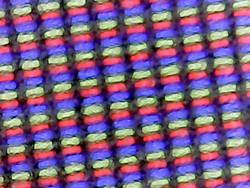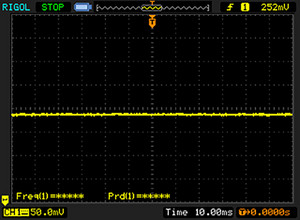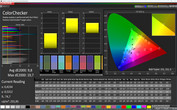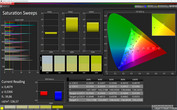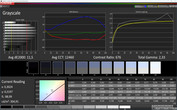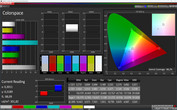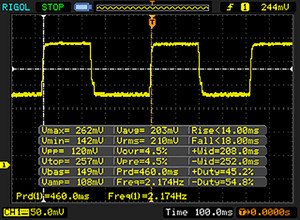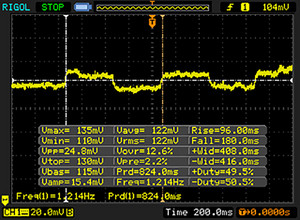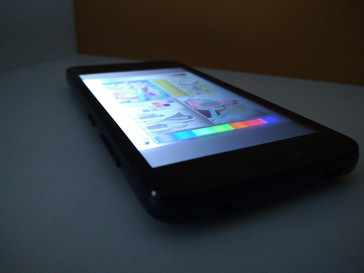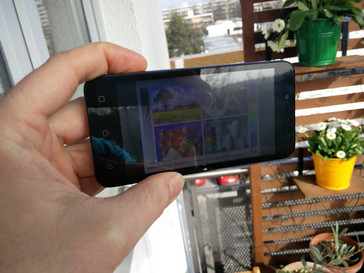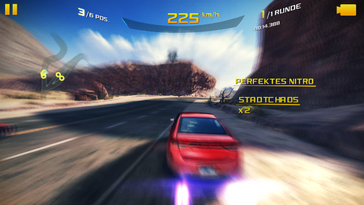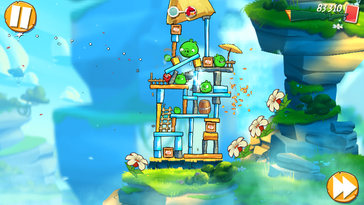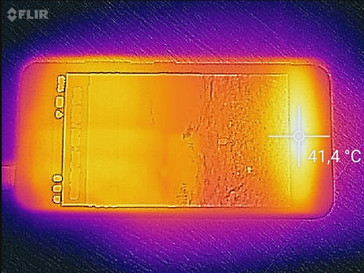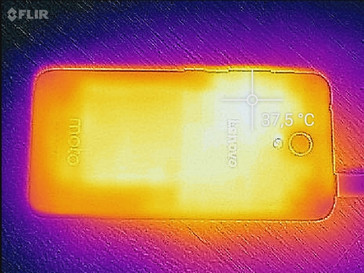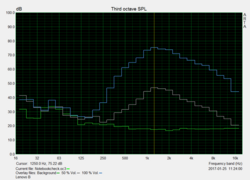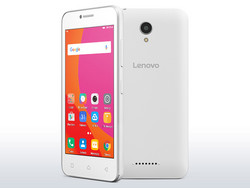Lenovo B Smartphone Review
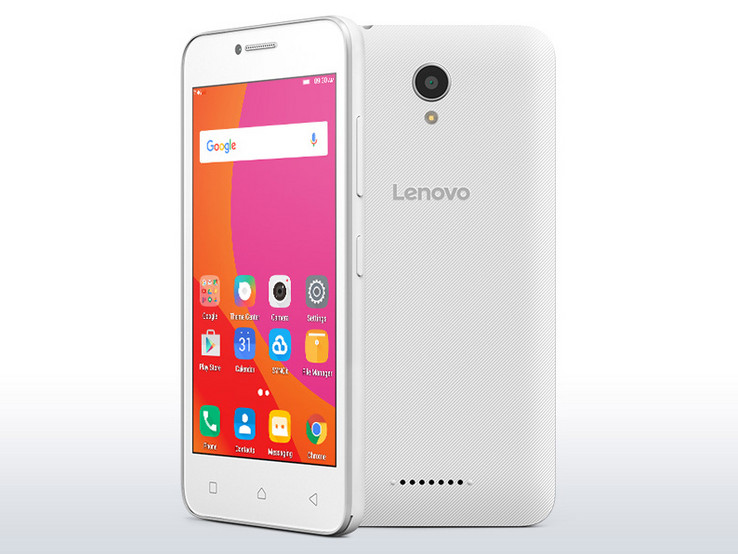
For the original German article, see here.
Lenovo's smartphone offensive to conquer significant western market-share certainly continues: their assortment covers the entire range between low-cost and high-end -- sometimes the same territory is even occupied by two models, if we consider their "trendy" Moto line too.
Today's device for testing, the Lenovo B, provides a pretty plain and simple design for its sub-100 Euros (~$108) price. But are we really facing a typical Lenovo bargain, or rather a cost-optimized product with a 4.5-inch display, the afore-mentioned LTE modem and replaceable battery? Let's also compare it to the major competitors in this price-class, such as the LG K4, the Wiko Jerry, the Archos 50 Platinum 4G or the Huawei Y5 II.
Case
What immediately meets the eye, but wasn't depicted in official product shots: on the back side there is a "Moto" logo, already wearing off -- at least on our test device, which is a retail item made available by the online shop "notebooksbilliger.de". The logo appears strangely displaced, since one might expect Lenovo to keep their main brand strictly separate from the trendy Moto products of Lenovo's affiliate Motorola. Could this be a first sign that a merger between the brands is in the making?
Regardless, such lousy screen-print quality is surprising. Otherwise, the back cover is slightly textured, which feels nice, but it is not really slip-proof. Its compact shape with rounded corners makes the Lenovo B fit well even into smaller hands.
A height of 9.9 mm makes the device appear quite massive, but, despite a weight of not less than 144 g, it is easy to hold. Applying pressure to the front causes a colorful pressure point with waves around it on screen, remaining for a few seconds. Pressing the back side hard will not affect the display though. The Lenovo does not produce a creaking sound when twisted. Altogether the device proves to have a good level of stability, with a slight deduction noted for the high pressure-sensitivity of the display.
Connectivity
The Lenovo B ships with 1 GB of RAM and 8 GB flash memory (eMMC). That's average for this price class, but some models even offer 16 GB internal storage. The tested smartphone provides dual-SIM capability; a single-SIM version is also available with no difference in price. The extra slots for micro-SIM and micro-SD card add value to the product. An extension of the internal storage capacity is especially necessary, as the built-in 8 GB leaves the user with just 3.75 GB of free space for personal data or additional apps! The manufacturer specifies a maximum of 32 GB, but our 64 GB SD-card worked as well.
The smartphone's sensor-equipment is quite limited; it lacks a sensor to adjust the display brightness as well as a proximity sensor, which is useful in preventing unsolicited app starts while on a call. Competitors like the Wiko Jerry or the Huawei Y5 II can score here. Last but not least, there is an FM radio on board.
Software
The preinstalled operating system is Android 6, with the last security patches updated on October 5, 2016 -- almost half a year before our test. It would be better not to expect any updates for such a low-budget product! The Lenovo apps SHAREit and SYNCit to transfer data between devices or to use the Lenovo cloud service are included. Then there is the Lenovo Companion, an app containing diagnose and help tools to better understand the smartphone. That Lenovo has to install some promotional apps is quite a nuisance in consideration of the very limited memory storage available.
Communication and GPS
The Lenovo B provides LTE-connectivity, which, while not entirely out of the ordinary, still isn't the normal for devices in this price-segment. Altogether this modem can cover nine different LTE frequency bands. Our German Vodafone connection signal never went below half in signal strength, when tested in urban area, indoors or on the road.
WLAN connectivity is limited to 802.11 b/g/n; the faster 802.11 ac WLAN is beyond the class-standard. Also, the rarely used 5 GHz band isn't supported by all our competitors. But even in comparison with other low-budget smartphones the Lenovo B's data-transfer rates score low: receiving only at 39.5 MBit/s and sending at just 47.7 MBit/s.
| Networking | |
| iperf3 transmit AX12 | |
| Lenovo C2 | |
| Lenovo Moto E3 | |
| Lenovo B | |
| iperf3 receive AX12 | |
| Lenovo C2 | |
| Lenovo Moto E3 | |
| Lenovo B | |
The GPS module is pretty responsive: though our location cannot be determined while being indoors, our position outdoors is quickly located with an accuracy of 3 m radius.
For deeper analysis we take the Lenovo B on a short bike ride -- together with our professional navigation device Garmin Edge 500. The Lenovo B calculates the route by 400 m shorter than the pro navigation, which is caused by the fact that smartphones usually set less measuring-points and thus lack accuracy due to adding up from fewer straight lines between way-points. But most competitors perform worse. For a hobbyist, with little need for absolute precision, the GPS module provides a nice benefit.
Telephone and Call Quality
Lenovo modified Google's stock phone app without providing significant improvement or new features. A "mercury keyboard" might be the most special feature: when the mobile leans, the keypad will lean too, the perspective increase of the numpad is supposed to accommodate one-hand usability. Alas, there seems to be no mid-adjustment, thus keys never display just square.
The voice quality is acceptable in general. Signal reception and sound reproduction result in hearing loud and clear voices through the head-set or the built-in speakers. Our transmission works fairly well too for the other side, even when we lower our voice. Alas, on speaker-phone a permanent background noise is produced, drowning out any soft voices.
Cameras
As a consequence of Lenovo's tight budget, very limited optical signal-processing capabilities are to be expected: both cameras are fix-focused, with a meager 5 megapixel resolution at the rear and just 2 megapixels at the front. At least the main camera features an LED flash.
Still, the images of the main camera appear blurry and without distinctness in detail, which is obvious even without magnification. Colors appear washed-out instead of impressive. Poor illumination will drown pictures in an ocean of noise. Videos can be recorded in up to 720p resolution at 20 frames per second provided one accepts shuttering images, color artifacts and lots of noise in the darker parts. Exposure adaptation worked responsively at least.
While the front-cam produces dim colors too, its sharpness was quite acceptable, as was the distinctness in dark and bright areas.
By making standardized shots of our reference objects under pre-determined light conditions with the main camera, we analyzed inconsistency in sharpness, with high variation from crisp areas to neighboring blurry ones. Letters on colored backgrounds cause problems too, as do high-contrast borders, creating fringes and color variations.
We couldn't even recommend the rear camera for snapshots, which often turn out badly blurred.
Accessories and Warranty
The box just contains the charger with a cable and the obligatory printed reference. There are no options to purchase special accessories for this device via Lenovo online.
Lenovo provides a warranty of 24 months for the device and 12 months for the replaceable battery, which is remarkable, as Lenovo's Moto devices only get a 12-month guarantee.
Please see our Guarantees, Return Policies and Warranties FAQ for country-specific information.
Input Devices and Handling
The virtual keyboard software is Google's standard app, which is part of Android 6. Despite the small size of the displayed keys on the screen, typing works precisely. Fast typists may feel a slight delay in reaction, but this would not slow down from writing as fast as possible on such an on-screen keyboard.
On rare occasions the space-bar wasn't recognized. That might be caused by the fact that the touchscreen can only process two inputs at the same time. Apart from that, the touchscreen is well usable, with no lack of sensitivity at the edges. Some time might be needed to get used to the unusual positioning of the menu buttons, which are designed as integrated touch buttons. On the right side of the device there are the obligatory rocker-switch for volume control and the stand-by button. Both are easy to manage due to palpable pressure points.
Display
The Lenovo B's display type is becoming quite uncommon: nowadays a TN panel can only be found in exceptionally low-priced smartphones, as the price-gap to an IPS panel is too marginal to justify the TN panel's bad viewing angles. A resolution of 854x480 pixels for a 4.5-inch screen is still acceptable, though small letters show visible pixelation. In general, such a coarse-grained surface constitutes for an uneven impression. Competitors like the Archos 50 Platinum or the Huawei Y5 II provide a 720p-resolution at the same price.
The maximal screen-brightness is quite low; we measured a mean value of 302 cd/m² across the display. The competitors score significantly better. What all products have in common, though, is the lack of a brightness sensor, which requires manual corrections. The illumination level is 96%, which leads to an almost exemplarily consistent display of large color spaces.
| |||||||||||||||||||||||||
Brightness Distribution: 96 %
Center on Battery: 309 cd/m²
Contrast: 672:1 (Black: 0.46 cd/m²)
ΔE ColorChecker Calman: 9.8 | ∀{0.5-29.43 Ø4.78}
ΔE Greyscale Calman: 11.5 | ∀{0.09-98 Ø5}
Gamma: 2.33
CCT: 12460 K
| Lenovo B TN LED, 854x480, 4.5" | Archos 50 Platinum 4G IPS, 1280x720, 5" | Huawei Y5 II IPS, 1280x720, 5" | LG K4 TN-TFT, 854x480, 4.5" | Wiko Jerry IPS, 854x480, 5" | |
|---|---|---|---|---|---|
| Screen | 12% | 7% | 2% | 21% | |
| Brightness middle (cd/m²) | 309 | 344 11% | 465 50% | 337 9% | 432 40% |
| Brightness (cd/m²) | 302 | 349 16% | 443 47% | 342 13% | 436 44% |
| Brightness Distribution (%) | 96 | 89 -7% | 90 -6% | 92 -4% | 91 -5% |
| Black Level * (cd/m²) | 0.46 | 0.65 -41% | 0.84 -83% | 0.44 4% | 0.57 -24% |
| Contrast (:1) | 672 | 529 -21% | 554 -18% | 766 14% | 758 13% |
| Colorchecker dE 2000 * | 9.8 | 5.8 41% | 7.8 20% | 11.4 -16% | 7 29% |
| Colorchecker dE 2000 max. * | 19.7 | 10.7 46% | 15.7 20% | 22 -12% | 12.4 37% |
| Greyscale dE 2000 * | 11.5 | 5.7 50% | 8.4 27% | 11 4% | 7.6 34% |
| Gamma | 2.33 94% | 2.1 105% | 2.07 106% | 2.19 100% | 2.1 105% |
| CCT | 12460 52% | 7792 83% | 8438 77% | 9372 69% | 8368 78% |
* ... smaller is better
Screen Flickering / PWM (Pulse-Width Modulation)
| Screen flickering / PWM not detected | |||
In comparison: 53 % of all tested devices do not use PWM to dim the display. If PWM was detected, an average of 8125 (minimum: 5 - maximum: 343500) Hz was measured. | |||
A black value of 0.46 cd/m² is quite acceptable, resulting in a reasonable contrast ratio of 672:1. There are no possibilities of display adjustment; the image presentation looks strong in colors.
By the means of a spectral photometer and the software CalMAN we achieve concrete details about the display quality: there is an extreme blue tint, while all colors in general deviate in respect to their reference values defined by the sRGB color space. But who would judge the quality of photos by such a screen anyway?
Display Response Times
| ↔ Response Time Black to White | ||
|---|---|---|
| 32 ms ... rise ↗ and fall ↘ combined | ↗ 14 ms rise | |
| ↘ 18 ms fall | ||
| The screen shows slow response rates in our tests and will be unsatisfactory for gamers. In comparison, all tested devices range from 0.1 (minimum) to 240 (maximum) ms. » 85 % of all devices are better. This means that the measured response time is worse than the average of all tested devices (20.2 ms). | ||
| ↔ Response Time 50% Grey to 80% Grey | ||
| 276 ms ... rise ↗ and fall ↘ combined | ↗ ms rise | |
| ↘ ms fall | ||
| The screen shows slow response rates in our tests and will be unsatisfactory for gamers. In comparison, all tested devices range from 0.165 (minimum) to 636 (maximum) ms. » 100 % of all devices are better. This means that the measured response time is worse than the average of all tested devices (31.6 ms). | ||
Performance
Data processing inside the Lenovo B is performed by the MediaTek MT6735M SoC, a trimmed-down MT6735 with slower clock-speeds for the processor and graphics. The four CPU cores run at just 1 GHz. The lower-clocked MT6735 is also inside the LG K4 and the Archos 50 Platinum, so that any performance difference might be marginal.
The entry-level Mali-T720 MP2 GPU is integrated into the MediaTek SoC. A single cluster runs at 450 MHz. With such comparatively low performance, the Lenovo B is on class-level. One has to live with delays and stuttering. 1 GB RAM is too little to keep complex apps running in the background.
| AnTuTu v6 - Total Score (sort by value) | |
| Lenovo B | |
| Archos 50 Platinum 4G | |
| Huawei Y5 II | |
| LG K4 | |
| Wiko Jerry | |
| Geekbench 4.0 | |
| 64 Bit Single-Core Score (sort by value) | |
| Lenovo B | |
| Archos 50 Platinum 4G | |
| Huawei Y5 II | |
| 64 Bit Multi-Core Score (sort by value) | |
| Lenovo B | |
| Archos 50 Platinum 4G | |
| Huawei Y5 II | |
| 3DMark | |
| 1280x720 offscreen Ice Storm Unlimited Score (sort by value) | |
| Lenovo B | |
| Archos 50 Platinum 4G | |
| Huawei Y5 II | |
| LG K4 | |
| Wiko Jerry | |
| 1280x720 offscreen Ice Storm Unlimited Graphics Score (sort by value) | |
| Lenovo B | |
| Archos 50 Platinum 4G | |
| Huawei Y5 II | |
| LG K4 | |
| Wiko Jerry | |
| 1280x720 offscreen Ice Storm Unlimited Physics (sort by value) | |
| Lenovo B | |
| Archos 50 Platinum 4G | |
| Huawei Y5 II | |
| LG K4 | |
| Wiko Jerry | |
| GFXBench (DX / GLBenchmark) 2.7 | |
| T-Rex Onscreen (sort by value) | |
| Lenovo B | |
| Archos 50 Platinum 4G | |
| Huawei Y5 II | |
| LG K4 | |
| Wiko Jerry | |
| 1920x1080 T-Rex Offscreen (sort by value) | |
| Lenovo B | |
| Archos 50 Platinum 4G | |
| Huawei Y5 II | |
| LG K4 | |
| Wiko Jerry | |
| GFXBench 3.0 | |
| on screen Manhattan Onscreen OGL (sort by value) | |
| Lenovo B | |
| Archos 50 Platinum 4G | |
| Huawei Y5 II | |
| LG K4 | |
| 1920x1080 1080p Manhattan Offscreen (sort by value) | |
| Lenovo B | |
| Archos 50 Platinum 4G | |
| Huawei Y5 II | |
| LG K4 | |
| GFXBench 3.1 | |
| on screen Manhattan ES 3.1 Onscreen (sort by value) | |
| Lenovo B | |
| Archos 50 Platinum 4G | |
| Huawei Y5 II | |
| LG K4 | |
| 1920x1080 Manhattan ES 3.1 Offscreen (sort by value) | |
| Lenovo B | |
| Archos 50 Platinum 4G | |
| Huawei Y5 II | |
| PCMark for Android - Work performance score (sort by value) | |
| Lenovo B | |
| Archos 50 Platinum 4G | |
| Huawei Y5 II | |
| LG K4 | |
| Wiko Jerry | |
| BaseMark OS II | |
| Overall (sort by value) | |
| Lenovo B | |
| Archos 50 Platinum 4G | |
| Huawei Y5 II | |
| LG K4 | |
| Wiko Jerry | |
| System (sort by value) | |
| Lenovo B | |
| Archos 50 Platinum 4G | |
| Huawei Y5 II | |
| LG K4 | |
| Wiko Jerry | |
| Memory (sort by value) | |
| Lenovo B | |
| Archos 50 Platinum 4G | |
| Huawei Y5 II | |
| LG K4 | |
| Wiko Jerry | |
| Graphics (sort by value) | |
| Lenovo B | |
| Archos 50 Platinum 4G | |
| Huawei Y5 II | |
| LG K4 | |
| Wiko Jerry | |
| Web (sort by value) | |
| Lenovo B | |
| Archos 50 Platinum 4G | |
| Huawei Y5 II | |
| LG K4 | |
| Wiko Jerry | |
Surfing the Internet is as quick with the Lenovo B as with its competitors, only the Huawei Y5 II excels in speed here slightly. Expect delays in loading times and occasional stutters when browsing sophisticated HTML5 websites.
| Mozilla Kraken 1.1 - Total (sort by value) | |
| Lenovo B | |
| Archos 50 Platinum 4G | |
| Huawei Y5 II | |
| LG K4 | |
| Wiko Jerry | |
| Octane V2 - Total Score (sort by value) | |
| Lenovo B | |
| Archos 50 Platinum 4G | |
| Huawei Y5 II | |
| LG K4 | |
| Wiko Jerry | |
| JetStream 1.1 - Total Score (sort by value) | |
| Lenovo B | |
| Archos 50 Platinum 4G | |
| Huawei Y5 II | |
| LG K4 | |
| Wiko Jerry | |
* ... smaller is better
Even for a budget phone the Lenovo B's storage access is quite poor. Especially when accessing the memory, the competitors are a little faster. Also SD-card access is quite slow: our reference card, a Toshiba Exceria Pro M401, would permit significantly higher data-throughput, and again most competitors do better.
| AndroBench 3-5 | |
| Sequential Read 256KB (sort by value) | |
| Lenovo B | |
| Archos 50 Platinum 4G | |
| Huawei Y5 II | |
| LG K4 | |
| Wiko Jerry | |
| Sequential Write 256KB (sort by value) | |
| Lenovo B | |
| Archos 50 Platinum 4G | |
| Huawei Y5 II | |
| LG K4 | |
| Wiko Jerry | |
| Random Read 4KB (sort by value) | |
| Lenovo B | |
| Archos 50 Platinum 4G | |
| Huawei Y5 II | |
| LG K4 | |
| Wiko Jerry | |
| Random Write 4KB (sort by value) | |
| Lenovo B | |
| Archos 50 Platinum 4G | |
| Huawei Y5 II | |
| LG K4 | |
| Wiko Jerry | |
| Sequential Read 256KB SDCard (sort by value) | |
| Lenovo B | |
| Archos 50 Platinum 4G | |
| Huawei Y5 II | |
| LG K4 | |
| Wiko Jerry | |
| Sequential Write 256KB SDCard (sort by value) | |
| Lenovo B | |
| Archos 50 Platinum 4G | |
| Huawei Y5 II | |
| LG K4 | |
| Wiko Jerry | |
Games
The Lenovo B doesn't really qualify for gaming, despite its low resolution. A demanding racing game like Asphalt 8 is practically unplayable with all these shutters and stutters. Even with a reduced detail level some stuttering remains. On the other hand, simple games like Angry Birds 2 run smoothly and without problem. Due to precise navigation by the acceleration sensors and touchscreen it can be real fun.
| Asphalt 8: Airborne | |||
| Settings | Value | ||
| high | 10 fps | ||
| Temple Run 2 | |||
| Settings | Value | ||
| default | 59 fps | ||
Emissions and Energy
Temperature
In stand-by, the device warms-up to 36.6 °C, which is mainly noticeable on the front side. Operation under full load won't lead to a significant increase; we measured a maximum of 38.5 °C. Some of the heat will spread throughout the device but nobody would claim that the Lenovo B becomes uncomfortably hot.
(+) The maximum temperature on the upper side is 38.5 °C / 101 F, compared to the average of 35.2 °C / 95 F, ranging from 21.9 to 247 °C for the class Smartphone.
(+) The bottom heats up to a maximum of 36.6 °C / 98 F, compared to the average of 34 °C / 93 F
(±) In idle usage, the average temperature for the upper side is 32.7 °C / 91 F, compared to the device average of 32.9 °C / 91 F.
Speakers
The small built-in speaker on the back side does a decent job. The volume level is acceptable -- but don't expect to hear low frequencies! Otherwise mid- and high-sounds are quite balanced which makes occasional listening to music possible, provided you face the speaker.
Sound output via the 3.5 mm jack provides clean results, as well as via Bluetooth.
Lenovo B audio analysis
(+) | speakers can play relatively loud (82.3 dB)
Bass 100 - 315 Hz
(-) | nearly no bass - on average 28.8% lower than median
(±) | linearity of bass is average (10.9% delta to prev. frequency)
Mids 400 - 2000 Hz
(±) | higher mids - on average 8.6% higher than median
(±) | linearity of mids is average (8.7% delta to prev. frequency)
Highs 2 - 16 kHz
(+) | balanced highs - only 4.7% away from median
(+) | highs are linear (6% delta to prev. frequency)
Overall 100 - 16.000 Hz
(-) | overall sound is not linear (31% difference to median)
Compared to same class
» 80% of all tested devices in this class were better, 4% similar, 17% worse
» The best had a delta of 11%, average was 35%, worst was 134%
Compared to all devices tested
» 89% of all tested devices were better, 2% similar, 8% worse
» The best had a delta of 4%, average was 24%, worst was 134%
Huawei Y5 II audio analysis
(+) | speakers can play relatively loud (87 dB)
Bass 100 - 315 Hz
(-) | nearly no bass - on average 29.4% lower than median
(±) | linearity of bass is average (9% delta to prev. frequency)
Mids 400 - 2000 Hz
(±) | higher mids - on average 7.3% higher than median
(±) | linearity of mids is average (10.1% delta to prev. frequency)
Highs 2 - 16 kHz
(±) | higher highs - on average 13% higher than median
(+) | highs are linear (5.7% delta to prev. frequency)
Overall 100 - 16.000 Hz
(-) | overall sound is not linear (34% difference to median)
Compared to same class
» 84% of all tested devices in this class were better, 1% similar, 15% worse
» The best had a delta of 11%, average was 35%, worst was 134%
Compared to all devices tested
» 92% of all tested devices were better, 1% similar, 6% worse
» The best had a delta of 4%, average was 24%, worst was 134%
Frequency diagram (checkboxes can be selected/de-selected)
Power Consumption
The power drain shows acceptable levels in idle mode, with a remarkable 1.33 W as well as when in stand-by or switched off. Full load usage though leads to an average consumption of 4.59 W -- which is more than the comparison devices.
| Off / Standby | |
| Idle | |
| Load |
|
Key:
min: | |
| Lenovo B 2000 mAh | Archos 50 Platinum 4G 2200 mAh | Huawei Y5 II 2200 mAh | LG K4 1940 mAh | Wiko Jerry 2000 mAh | |
|---|---|---|---|---|---|
| Power Consumption | -17% | -10% | -25% | -46% | |
| Idle Minimum * (Watt) | 0.64 | 0.59 8% | 0.54 16% | 1.15 -80% | 0.8 -25% |
| Idle Average * (Watt) | 0.96 | 1.68 -75% | 1.58 -65% | 1.76 -83% | 2.02 -110% |
| Idle Maximum * (Watt) | 1.33 | 1.79 -35% | 1.7 -28% | 1.82 -37% | 2.19 -65% |
| Load Average * (Watt) | 4.59 | 4.22 8% | 2.98 35% | 2.71 41% | 5.02 -9% |
| Load Maximum * (Watt) | 4.63 | 4.26 8% | 4.98 -8% | 3.15 32% | 5.52 -19% |
* ... smaller is better
Battery Runtime
The Lenovo B's battery capacity of 2000 mAh or 7.6 Wh is class standard, but due to its exchangeability we could switch to a second battery to double the runtime. Our WLAN test lasted 7:22 hours, a usual performance expected for the budget class, but many competitors could keep-up for a little longer.
It should be noted that a complete recharge takes quite a long time: it took 3 hours for the included charger to fully recharge the phone.
| Lenovo B 2000 mAh | Archos 50 Platinum 4G 2200 mAh | Huawei Y5 II 2200 mAh | LG K4 1940 mAh | Wiko Jerry 2000 mAh | |
|---|---|---|---|---|---|
| Battery runtime | -14% | 14% | 1% | 7% | |
| WiFi v1.3 (h) | 7.4 | 6.4 -14% | 8.4 14% | 7.5 1% | 7.9 7% |
| Reader / Idle (h) | 18.4 | ||||
| Load (h) | 4.2 |
Pros
Cons
Verdict
It was immediately clear that a budget price of less than 100 Euros (~$108) doesn't leave much opportunity for the Lenovo to use high-value components. However, resorting to a low-res TN panel with poor brightness and a blatant blue tint, together with a camera that produces mainly blurry, faded images, is nothing else but meager -- even for the budget class! Its performance found the Lenovo B quite on par with the competition, as did the battery life, with an extra feature to swap the battery out. Its long charging time didn't impress, though.
While demands and expectations in this entry-class might be rather moderate, we can't help noticing that the competition provides more bang for the buck: more memory, better camera or better display. Its compact size makes the Lenovo B well manageable for children's hands. It might be a solid product, but it definitely sets no new standards in its class.
Lenovo B
- 03/18/2017 v6 (old)
Florian Wimmer




